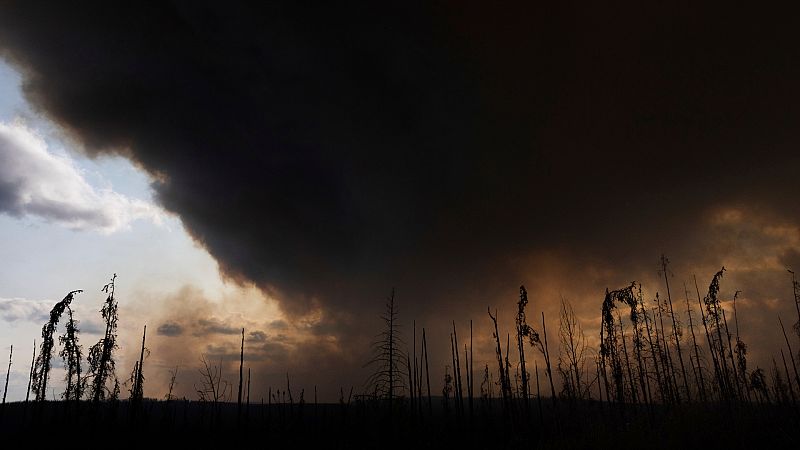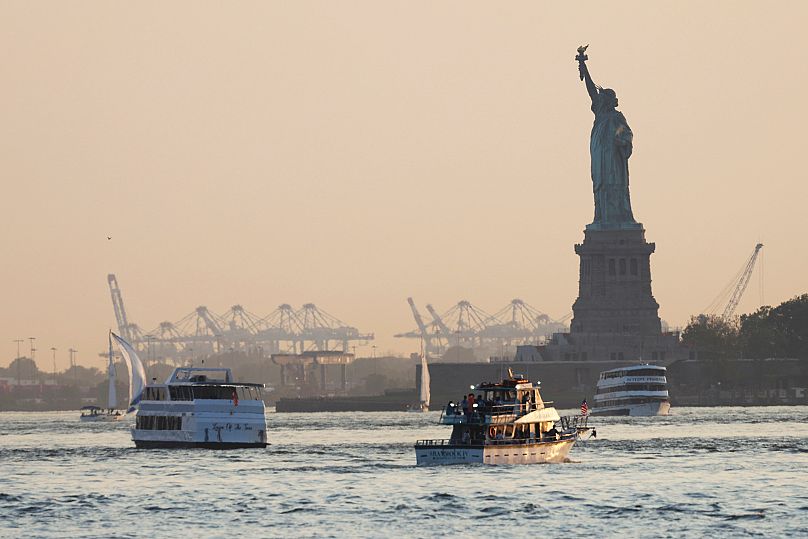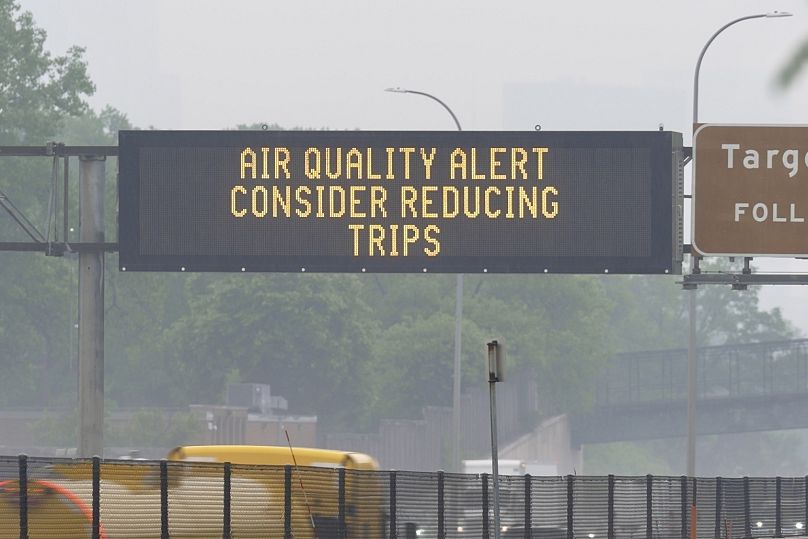
Canada’s wildfire season has got off to a dangerous start, with thousands of people forced to flee their homes and blankets of smoke affecting air quality across eastern North America.
Following a series of record-breaking seasons, data shows that 2025 is also shaping up to be another intense year.
Twice a day, a NASA satellite sends images to the ground, giving a real-time view of where fires are burning. This is especially useful for remote areas where no sensors are stationed.
As of Tuesday, that satellite had picked up four times as many fire hot spots across Canada than is typical for early June. That’s more than any year since the satellite began transmitting in 2012, except 2023, according to data from Global Forest Watch.
Though the satellite has recorded thousands of hot spots so far this year, that does not mean there are actually that many active fires. Each hot spot could be detected repeatedly over the course of days.
And because each detection is about the size of 26 football fields, each point of data might be one part of a much larger blaze, said James MacCarthy, wildfire research manager at Global Forest Watch.
Based on data from the Canadian Interagency Forest Fire Centre, about 200 fires are actively burning in Canada and have consumed about 19,900 square kilometres of terrain, most of it in the last week.
Only 2023 saw such high numbers so early in Canada's fire season, which runs from April through October. That year, wildfires burned a record 170,000 square kilometres - more than twice the surface area of Lake Superior, the largest of the Great Lakes.
Taken together, the hot spots and area burned mean 2025 is the second-worst start to the season in years.
Smoke from Canada’s wildfires has reached Europe
Smoke from Canadian wildfires worsened air quality in the eastern US on Wednesday as several Midwestern states battled conditions deemed unhealthy by the federal government.
It lingered on the skylines of cities from Kansas City to Minneapolis, and a swath of the region had unhealthy air quality according to an Environmental Protection Agency map. Over the last few days, air quality alerts have been issued in several states, including New York, New Jersey, Iowa, New Hampshire and Maine.

The EU’s Copernicus Atmosphere Monitoring Service (CAMS) said this week that smoke from wildfires in the provinces of Manitoba and Saskatchewan had even been transported across the Atlantic, reaching Europe.
An initial plume crossed the Mediterranean region on 18 to 19 May, reaching as far east as Greece. A second, larger plume crossed the Atlantic in the last week of May, reaching northwestern parts of Europe on 1 June.
The smoke isn’t expected to have any significant impact on Europe’s air quality as it is high up in the atmosphere. Typically, the effects of plumes like this are more hazy skies with red or orange sunsets.

But, says Mark Parrington, senior scientist of CAMS, the fact that the smoke can be observed in Europe “is a reflection of the scale of the fires and the impacts they have been having in Manitoba and Saskatchewan.”
“Wildfires are a frequent occurrence in boreal forests from spring and through the summer months,” Parrington adds. “Up to the beginning of June, our data is showing that central regions of Canada have experienced a very intense few weeks in terms of wildfire emissions.”
Why are wildfires so bad in Canada this year?
“A warm and dry finish to May and early June has created a significant fire season,” said Liam Buchart, a fire weather specialist with the Canadian Forest Service.
The weather conditions are made more likely by climate change and encourage wildfires to start. That means even though 90 per cent of wildfires in Manitoba this year have been human-caused, according to the provincial government, climate change helps enable their spread.
“Climate change is creating the conditions that make it more likely that human-caused fires are going to spread, or even start,” MacCarthy said.
“It might be a human starting it, but it’s going to spread quickly because now there’s hot and dry conditions that are occurring more frequently and more intensely than they have in the past.”
The hot and dry weather is likely to continue for at least the next week across Manitoba, Saskatchewan and Alberta, according to Natural Resources Canada. The agency’s forecasts also call for “a warmer and drier than normal July and August for large portions of Canada,” Buchart said.
“The remainder of the fire season looks to remain above normal, especially over the northern prairie provinces and southern British Columbia,” he said.







